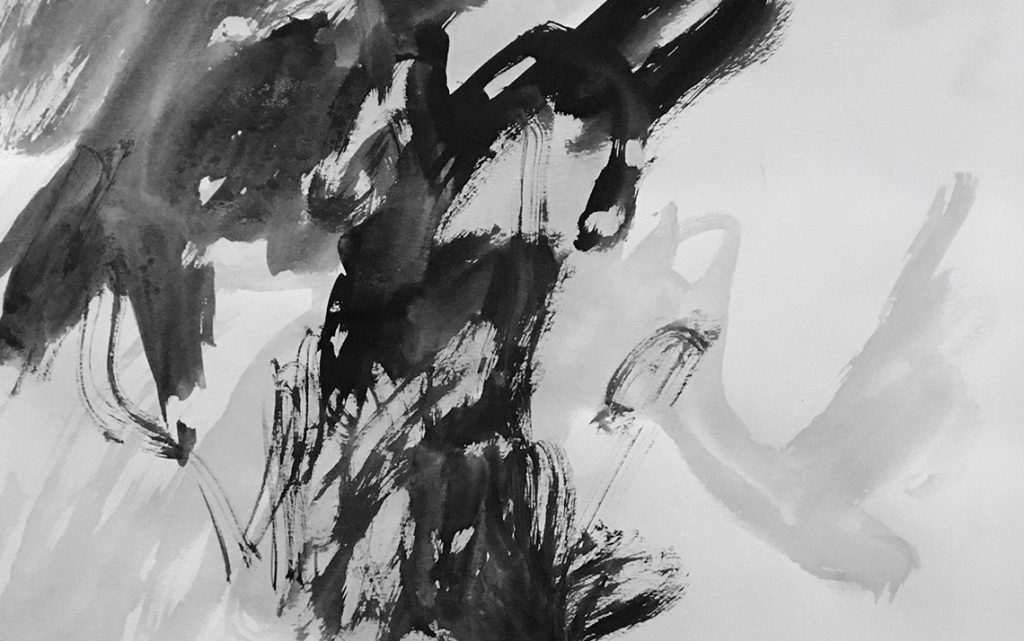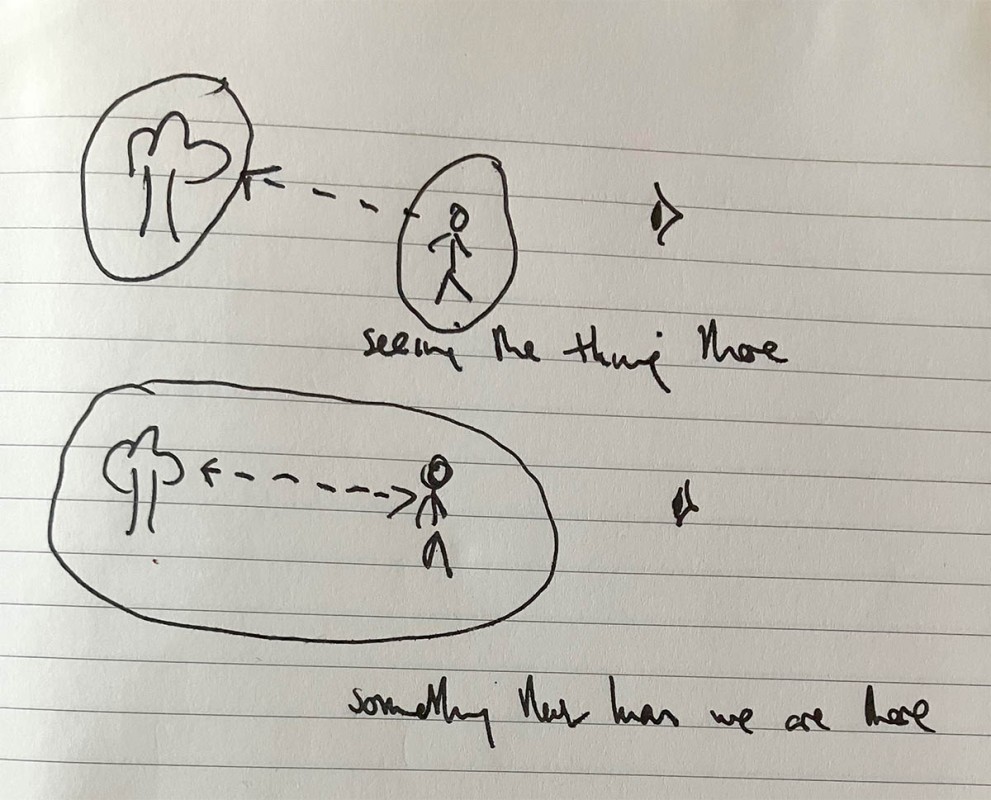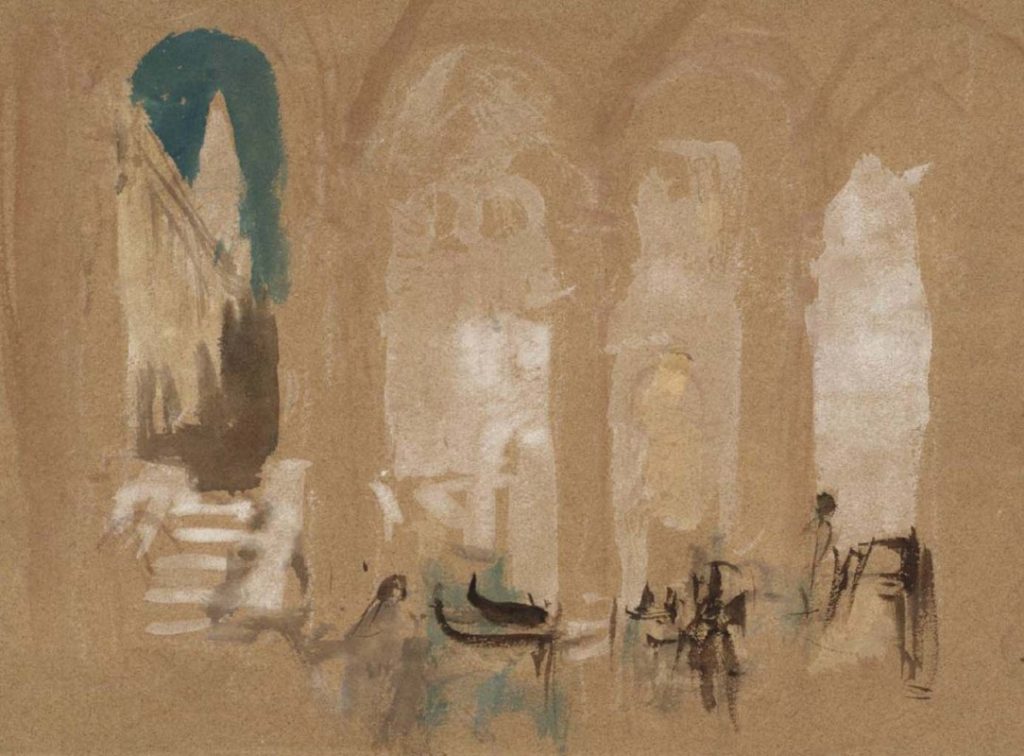
More Little Words

Three Little Words

Notebook
I was reading ‘Landmarks’ by Robert McFarlane last night and was struck by a quote from American author and essayist Barry Lopez:
“One must wait for the moment when the thing — the hill, the tarn, the lunette, the kiss tank, the caliche flat, the bajada – ceases to be a thing and becomes something that knows we are there.”
This wonderful quote reminds me of many others I have used extensively in my work, some of which you can read in the blog below.
In particular that by Christopher Tilley who, in his book ‘The Materiality of Stone, Explorations in Landscape Phenomenology’, writes: “The trees ‘see’ the painter in a manner comparable to that in which the mirror ‘sees’ the painter: that is, the trees, like the mirror, let him become visible: they define a point of view on him which renders visible for him something that otherwise would remain invisible – his outside, his physiognomy, his carnal presence… The trees and mirror function as Other.”
That moment when a thing, like a tree, functions as ‘other’ is, I think, the same as the moment when, as Lopez puts it, the thing knows we are there. There is a connection, between us and the thing, which is much more than us simply seeing it. It is, in Goethean Observation, akin to the stage of ‘Seeing in Beholding’, characterised by the human gesture of ‘self-disspation’; the effort of holding back of our own activity – a form of receptive attentiveness that offers the phenomenon (the thing) a chance to express its own gesture.”
This is a sketch I made in my notebook when I read Lopez’s quote.

Looking at this image also reminds me of the Buddhist concept of interbeing, the deep interconnection we have with everything else around us, for example, the tree. The same can be true of things which existed centuries ago. Again I have used this example several times – a painting by Yu Jian entitled Mountain Village in Clearing Mist and a piece I wrote about it for a book.

“This seemingly rapid work transported me to a time long gone. It revealed – much as with the Japanese haiku of Basho – an ancient and vanished moment, not so much through what it showed but how it was depicted. It was almost as if I could see the landscape before the painter himself. I could see the work as a whole (the landscape as a whole), but then, whilst picking through the gestures of the artist, evident enough in the brushstrokes, I could see the landscape as it was revealed. Yu Jian’s painting was not a painting of what was experienced, but rather the experiencing of what was experienced. It was almost as if the painting had become a painting, not of Yu Jian looking at the mountains, but of the mountain ‘seeing’ Yu Jian. It wasn’t the mountain that was made visible on the paper, but the artist himself – his presence at that moment. 800 years after his death, and Yu Jian was as good as sitting next to me. Or to put it another way, 800 years before I was born, I was as good as sitting next to him.“
Again we have the idea of the ‘thing’, in this case the mountain, seeing the artist, but in this instance, this is a moment from 800 years ago. We are not simply seeing the painting by Yu Jian, we are experiencing the moment when the painting ‘knows’ we are there and by proxy, experiencing the moment it was made.
A similar thing happened last week when I went to London and saw the sketches of JMW Turner at Tate Britain. I had walked around the gallery for a while ‘seeing’ the paintings, but on coming across these sketches, it was as if in Lopez’s words, the paintings also saw me.

It was like with the diagram in my notebook, where seeing becomes beholding and the arch rendered quickly with a few quick strokes, becomes something I can walk through.